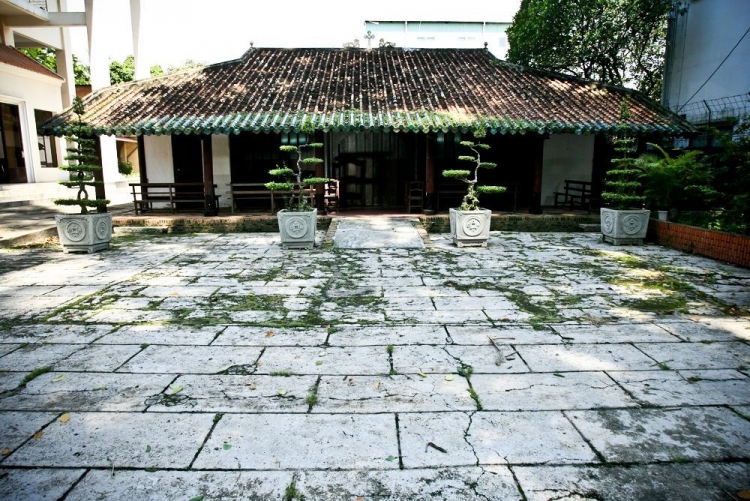The chapel (now called Tan Xa) locating at 180 Nguyen Dinh Chieu Street, in the campus of the bishop’s palace in District is considered as the oldest house in HCM City today. In 1790, Nguyen Anh, (Gia Long King) built a bamboo house covering-thatched roof on the right bank of Thi Nghe Canal. It was here that the Bishop tutored one of Nguyen Anh’s sons, the Prince Canh, who lived on-site.
In 1799, after losing Pigneau Pierre, a French bishop and others have to replace in the house, but between 1811 and 1864, the Hue court banned a Catholic, the house was closed. The story of how the French came to be presented with the house is well known. It was given in gratitude for their role in the suppression of the Tay Son rebellion, which resulted in the consolidation of the power of the Nguyen Dynasty in the recently settled lands of the south.

The beleaguered King Nguyen Anh had taken refuge in Thailand, where he had gained the support of the Thais. When the Thai army that entered Vietnam was routed by the Tay Son troops in just two days, there was no alternative now but to accept the French offer of their military intervention in order to save the day.
During the reign of Tu Duc, Mr. King has signed a peace treaty with France to expand the Zoological and Botanical gardens in Thi Nghe parish, the house was transferred to a spot near what is now the Reunification Palace. It was only in 1911 that it was relocated once again to to current location Time it is used as a chapel.

The chapel is built in the traditional architectural style, with three compartments and two lean-tos. Systems and roof tiles ruong short yang has formed an architecture with traditional wood Vietnam walls are thin slats of wood are arranged perpendicular. The wooden walls are not only a role for home protection but also a great ventilation system.

Later in 1945, the wall termite eaten wood has been replaced by brick. During remodeling in 1980, workers replaced the interior of the wooden termite feeding by pouring concrete into. Part exterior wood columns remain; they still seem to look ancient. The workers also had to raise the base column 30 cm. Until now, the Archbishop's Palace is 103 years old while the chapel is 215 years old.
Much is to be learnt from viewing this well restored house, because its original condition has remained unchanged. Coming Ho Chi Minh City, travelers still not forget to visit and contemplate the beauty of the chapel.





















































































































